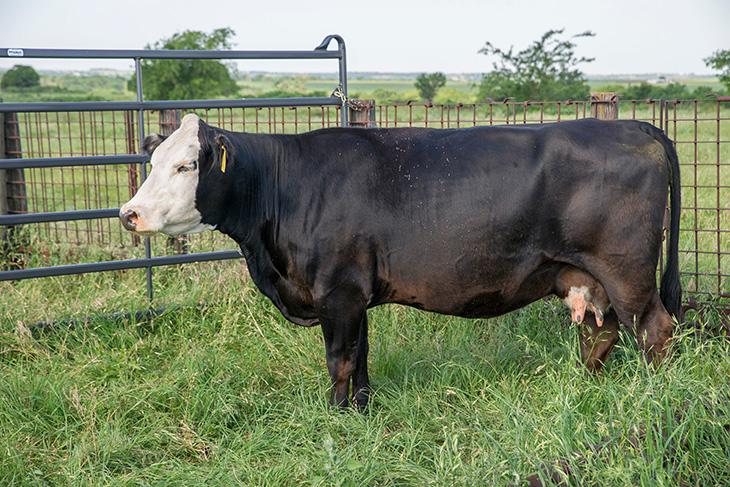
Dressing percentage has major impact on cull cow marketing
Friday, October 11, 2019
Understanding the major factors that affect cull cow prices is important to every cow-calf operation’s bottom line.
“Cull cows represent about 20 percent of the gross income in commercial cow-calf operations, with October often being the month for calf weaning and cow culling for spring-calving herds,” said Glenn Selk, Oklahoma State University Cooperative Extension emeritus animal scientist and managing editor of the university’s popular Cow-Calf Corner newsletter.
Cull cows destined to go to packing houses are graded by their fleshiness, with price differences set in large part by how the animals are graded. The U.S. Department of Agriculture’s Market News reports cull cows according to the following four grades:
The highest conditioned cull cows are reported as “Breakers.” These are quite fleshy and generally have excellent dressing percentages. A body condition score seven and above is required to be in the “Breakers” category.
The next class is a more moderate conditioned group of cows called “Boners” or “Boning Utility.” These cows usually fall in the body condition score grades of five to seven. Many well-nourished commercial beef cows grade out as “Boners.”
The last two grades are the “Leans” and “Lights.” These cows are thin, with body condition scores of four or below. In general, these animals will be lower in dressing percentage than fleshier cows and more easily bruised in transport than cows in better body condition. “Lights” are thin cows that are very small and would have very low carcass weights.
Selk said producers who sell cull cows should pay close attention to USDA Market News reports about the price differentials of cows in these classes. Cull cows that can be fed enough to gain body condition to improve from the “Lean” class to “Boner” class can gain weight and gain in value per pound at the same time.
“Basically, market cull cows during the fall and early winter while they are still in good enough condition to fall in the ‘Boner’ grade,” he said. “If the cows are very thin, consider short-term dry lot feeding to take them up in weight and up in grade. This often can be done in 50 to 70 days with excellent feed efficiency.”
There is little, if any, price per pound advantage of “Breakers” over “Boners,” plus cows lose feed efficiency if fed to that degree of fatness.
“It is important to recognize there is a variation in prices per hundredweight within each grade because of differences in dressing percentage between individual animals,” Selk said. “Cow buyers ae acutely aware of the proportion of the purchased live weight that eventually becomes saleable product.”
Mathematically, dressing percentage is the carcass weight divided by the live weight multiplied by 100. Key factors that affect dressing percentage include gut fill, udder size, mud and manure on the hide, excess leather on the body and basically anything else that contributes to an animal’s live weight but will not add to the carcass weight.
Most USDA Market News reports for cull cows will give price ranges for High, Average and Low Dressing Percentages for each grade.
“Many reports will indicate Low Dressing cows will be discounted up to $8 to $10 per hundredweight compared to High Dressing cows and $5 to $7 per hundredweight compared to Average Dressing cows,” Selk said. “Price differences typically are widest for ‘Leans’ and ‘Lights.’”
The Oklahoma Cooperative Extension Service is one of two state agencies administered by OSU’s Division of Agricultural Sciences and Natural Resources, and is a key part of the university’s state and federally mandated teaching, research and Extension land-grant mission.
MEDIA CONTACT: Donald Stotts | Agricultural Communications Services | 405-744-4079 | donald.stotts@okstate.edu
